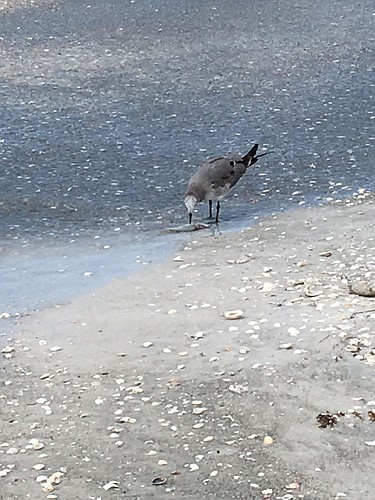- November 23, 2024
-
-
Loading

Loading

Red tide is back on Longboat Key.
The Florida Wildlife Commission and Mote Marine Laboratory officials confirmed it Tuesday morning.
Longboat Key turtle monitor Terri Driver said she was taking a lunch break on the beach when she “started smelling something unusual.”
“Then I looked out on the water and there were hundreds and hundreds (of dead fish),” she said.
Kelly Richmond, Florida Wildlife Commission communications director in St. Petersburg, said the FWC started receiving fish kill phone calls Monday. The FWC investigative team found a variety of different species of fish among the kills: Manhattan, eels, mullet, bait fish and one red drum.
“We do have a high concentration of red tide but it is patchy,” Richmond said.
FWC is doing weekly sampling and Mote is doing daily sampling along Sarasota Bay.
Juan Florensa, Public Works Department director, said red tide is dispersed along certain areas of the island where fish have been washing up dead such as the Broadway access.
“Hopefully it will be a small (outbreak),” Florensa said. “We don’t know yet. We’re holding our breath here, pardon the pun. Hopefully the tide will take it.”
Dead fish are accumulating along the shoreline from Beer Can Island as far south as central Longboat Key.
If the fish kills grow too onerous, the town could mount a cleanup effort, Florensa said.
“In the past the town has done so when it gets to certain levels,” Florensa said.
“Last year’s red tide went for more than six months bouncing from the Gulf to the Sarasota Bay. It was so miserable. Let’s hope that doesn’t happen again,” Driver said.
Turtle season complicates cleanup efforts because nesting sites are protected.
Mote Marine Laboratory scientists report Tropical Storm Hermine affected many sea turtle nests remaining on Longboat Key through Venice.
Of the record 4,447 nests laid so far this year on Mote-monitored beaches — Longboat Key through Venice — 1,700 had yet to hatch before the storm, according to Mote. Of those:
• 686 nests were deemed “total washouts,” unlikely to produce hatchlings. Washouts numbered 111 on Longboat Key, 43 on Lido Key, 94 on Siesta Key, 370 on Casey Key and 68 on Venice.
• 66 nests were observed in standing water, meaning they are unlikely to produce any hatchlings.
• 400 nests experienced accretion — more sand piled on top. Many accreted nests have a chance to hatch if the water drains from the sand.
2016 has been a highly productive year for sea turtle nesting in Mote’s area: The 4,447 nests laid to-date are the most ever recorded in Mote’s 35-year history of sea turtle conservation on Longboat Key through Venice.